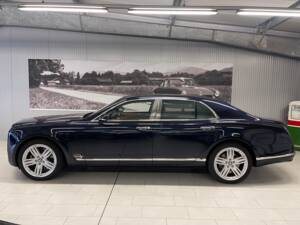Bentley Mulsanne classic cars for sale
The Bentley Mulsanne stands as Bentley’s flagship luxury saloon, shaped by the heritage of Le Mans and offered with a commanding 6.75-litre V8, hand-finished wood veneers, and exquisite leather. Distinguished by its dignified design and opulent features, the Mulsanne encapsulates British luxury at its most refined.
Search results

2011 | Bentley Mulsanne
Mulsanne Limousine 6.75 BiTurbo V8
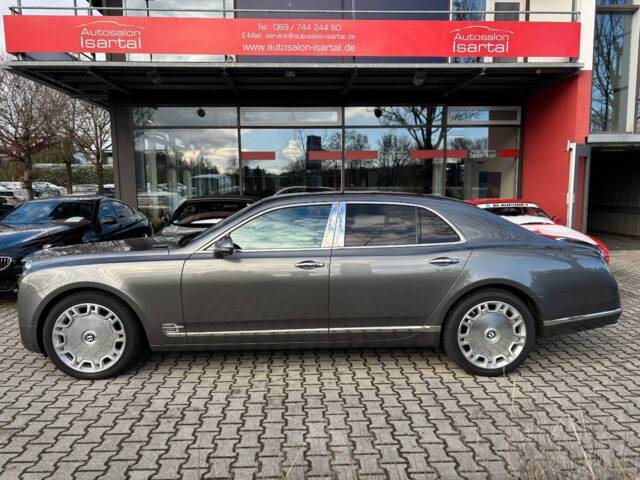
2013 | Bentley Mulsanne
Bentley Mulsanne
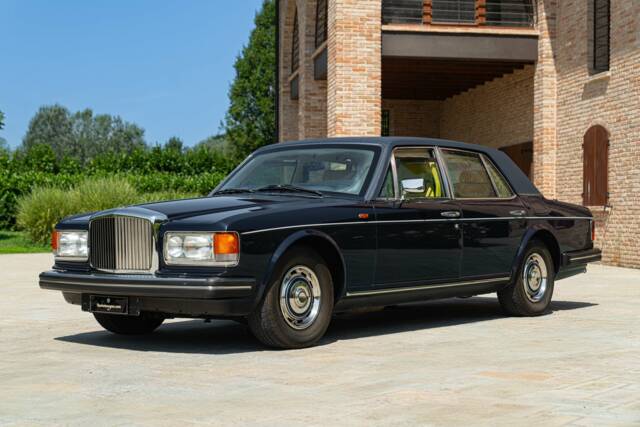
1985 | Bentley Mulsanne SWB
2025-02-01 06:21:47 | Bentley MULSANNE - BRV (Bullet Resistant Vehicle)
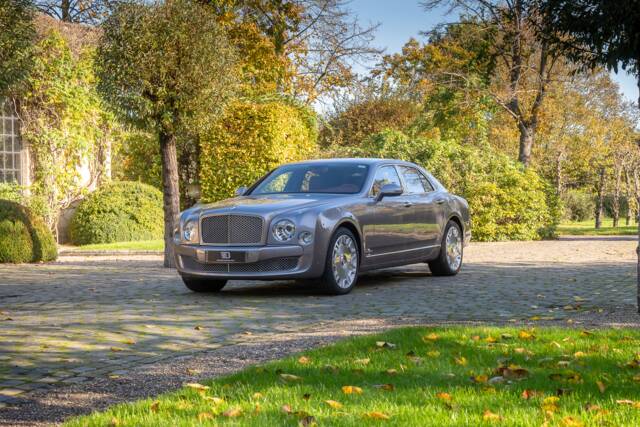
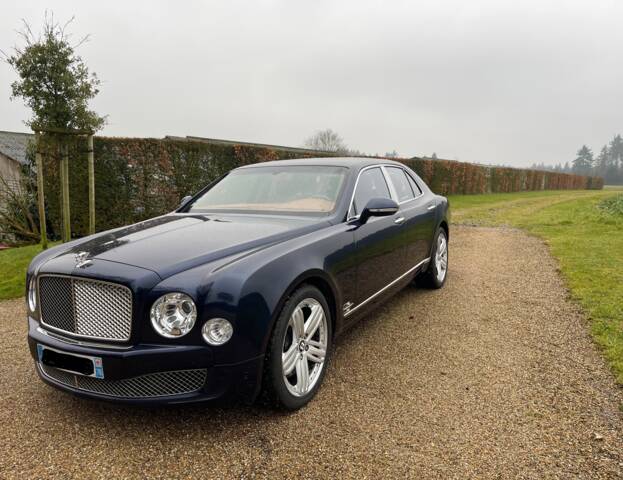
2012 | Bentley Mulsanne
Bentley Mulsanne in pristine condition
History of the Bentley Mulsanne
Bentley introduced the Mulsanne in 1980, naming it after the high-speed Mulsanne Straight at Le Mans in honour of the brand’s racing triumphs in the 1920s. Initially, the Mulsanne replaced the T2 as Bentley’s primary luxury saloon and sat alongside the Rolls-Royce Silver Spirit, sharing engineering but set apart by subtle design cues, such as the unique grille and bonnet mascot. The first generation, produced until 1992, featured a robust 6.75-litre V8, available with both carburettors and later Bosch injection. In 2010, Bentley revived the Mulsanne name for a new flagship, marking the first wholly Bentley-designed top model since the 8 Litre of 1930.
Model History
The original Mulsanne ran from 1980 to 1992, succeeding the T2 and later succeeded by the Bentley Brooklands, then the Arnage. Over its 12-year run, 533 standard Mulsannes were built, with notable variants including the Mulsanne Turbo (1982-1985), Mulsanne Eight, and Mulsanne S (1987-1992). The Turbo models significantly increased output and sharpened the driving experience. The 2010 reintroduction replaced the Arnage and restored Bentley’s independence in luxury saloon engineering, remaining in production until 2020.
Highlights of the Bentley Mulsanne
Key features of the Mulsanne include its imposing V8 engine, with a distinctive blend of performance and refinement, and meticulously crafted interiors featuring hand-stitched leather, select walnut veneers, and finely engineered metallic trims. The vehicle offered extensive comfort and technology, including heated and electrically adjustable seats, four-zone climate control, and optional bespoke features like diamond quilting and rear entertainment systems. The Mulsanne’s tailored specification options and solid, British coachbuilt aura separate it from contemporaries.
In our marketplace, Bentley Mulsanne models without a manufacturer code account for 60.3% of the Bentley listings, with those bearing code 3Y representing 39.7%. When examining demand, non-3Y models capture 65.7% of Bentley inquiry views, further reflecting the enduring appeal of traditional Mulsanne variants.
Technical data
Special Editions and Collectible Models
Special models in the Mulsanne family include the Mulsanne Turbo, which debuted in 1982 with a Garrett AiResearch turbocharger lifting output by 50%, and was produced in 516 units through 1985. The Mulsanne Eight, a slightly more affordable model, was built in 1,736 examples and recognised for its wire-mesh grille reminiscent of pre-war Bentleys. The Mulsanne S, introduced in 1987 and produced until 1992 in 970 units, shared the luxury focus and enhanced chassis of the Turbo but retained the naturally aspirated engine. Each variant brought distinct details in upholstery, equipment, and driving dynamics.
Weak Spots and Common Issues
No specific weak spots or common issues have been recorded in the sources provided. As with all exclusive luxury vehicles, upkeep of the sophisticated mechanical and electrical systems and regular expert maintenance are crucial to ensure continued reliability and value retention, especially for early models with carburettors and pre-fuel injection equipment.
Engine and Performance, Transmission and Handling
The Mulsanne’s 6.75-litre V8 is renowned for its smooth delivery and impressive torque, even in naturally aspirated guise. Turbo models increased power output by 50%, resulting in acceleration times rivalling many performance sports cars of the period, with 0–100 km/h achieved around 10 seconds and top speeds in excess of 200 km/h. The Mulsanne S introduced stiffer suspension and alloy wheels for improved handling, blending comfort with dynamic capability. The automatic transmission is noted for its seamless shifting, and all models offer refined, silent cruising, in keeping with the car’s luxury purpose. - Mulsanne Turbo (1982–1985): 516 units, outstanding for its turbocharged output and performance
- Mulsanne S (1987–1992): 970 units, favoured for its combination of upgraded suspension and interior specification
- Mulsanne Eight (1980s–1992): 1,736 units, distinctive with its wire-mesh grille and competitive market positioning
Interior, Comfort, Exterior and Design
Bentley Mulsanne interiors are a demonstration of British craftsmanship, featuring hand-selected leather—often in cream shades—contrasted by polished walnut or burr wood veneers. Special editions offered details such as diamond-stitched upholstery, leather headlining, privacy glass, and custom embroidery. Exteriors are classic and dignified, with high-gloss paint, prominent ‘Flying B’ mascot (subject to model year), and detailed chrome accents. Specification often included 21-inch alloy wheels, halogen headlights, and a panoramic sunroof. The Mulsanne’s profile is defined by its assertive proportions, upright grille, and tailored stance—preserving the essence of British grand touring saloons. Accessories and optional equipment covered advanced infotainment, premium audio systems, cooled seats, televisions, and a refined array of customisation from Mulliner.
Other Relevant Features
The Mulsanne name pays homage to Bentley’s storied Le Mans history, with six victories underscoring the car’s engineering pedigree. The model was available as both standard and extended wheelbase, and, in some markets, could be registered as a historic vehicle. The underlying engineering and attention to detail in every component uphold Bentley’s reputation for durability when properly maintained.
Summary
A Bentley Mulsanne delivers a unique blend of stately performance, hand-crafted luxury, and classic British engineering. As a standard-bearer for the brand in both the 1980–1992 and 2010–2020 eras, it remains a showcase for the best in traditional saloon design and bespoke automotive craftsmanship. Its significant share in both supply and demand on the classic car market reflects continued appreciation among enthusiasts for its distinctive build and heritage.
